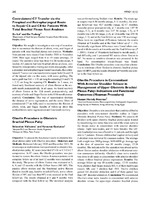JavaScript is disabled for your browser. Some features of this site may not work without it.
Mostrar el registro sencillo del ítem
| dc.contributor.author | Valbuena, Sebastián | |
| dc.contributor.author | Gasiunas, Vytautas | |
| dc.date.accessioned | 2016-10-04T17:18:26Z | |
| dc.date.available | 2016-10-04T17:18:26Z | |
| dc.date.issued | 2016 | |
| dc.identifier.uri | http://repositorio.hospitalelcruce.org/xmlui/handle/123456789/402 | |
| dc.description | Fil: Valbuena, S. Hospital de Alta Complejidad en Red El Cruce Dr. Néstor C. Kirchner. Servicio de Ortopedia y Traumatología. Florencio Varela, Argentina. | es_AR |
| dc.description | Fil: Gasiunas, V. Clinique de l’Alma. Paris, Francia. | es |
| dc.description | Work presented in IFSSH & IFSHT Triennial Congress: Buenos Aires 2016. | es |
| dc.description.abstract | Work presented in IFSSH & IFSHT Triennial Congress: Buenos Aires 2016. Objective: To present the functional results in obstetric brachial plexus palsy with Oberlin procedure. Materials and Methods: Between February 2010 and December 2015, 96 microsurgical explorations were performed in obstetric brachial plexus palsy, 42 cases presented C5-C6 or C5-C6-C7 compromise. In 17 cases, the Oberlin procedure was performed to restore the elbow flexion. Fourteen patients with complete follow-up of at least 12 months were included in this study. The power of elbow flexion was evaluated at 3, 6, 9, and 12 months with the Gilbert Score (M0-M3). The passive elbow motion and the functional active flexion (hand to mouth easy, hand to mouth difficult, active elbow flexion of 90°, and less than 90°) were assessed at the final follow-up. The results obtained at 6 and 9 months were compared with the final follow-up. The statistical analysis was performed using Student t test. Results: The mean age at surgery was 6.86 months (range, 3-11 months), the average follow-up was 40.7 months (range, 12-67 months), muscular power postoperatively at 3 months was 1.07 M (range, 0-2), at 6 months was 2.07 M (range, 1-3), at 9 months was 2.86 M (range, 2-3), at 12 months was 2.93 M (range, 2-3), and at the final follow-up was 3 M on average. There were no significant differences between the results obtained at 9 months and at the final follow-up (P = .15). Statistically significant differences were found when compared with the results at 6 months and the final follow-up (P= .0001). A total of 10 patients had hand to mouth easily, 3 had difficulty, and 1 presented M3 active elbow flexion to 90°. No motor or sensitive alteration was presented in the hand. No cocontraction triceps-biceps was found. Conclusion: The Oberlin procedure is an excellent alternative to reanimate elbow flexion in obstetric brachial plexus palsy (OBPP), and the results obtained at 9 months are similar to the final follow-up. | es_AR |
| dc.language.iso | en_US | es_AR |
| dc.title | Oberlin Procedure in Obstetric Brachial Plexus Palsy | es_AR |
| dc.type | Presentation | es_AR |
Ficheros en el ítem
Este ítem aparece en la(s) siguiente(s) colección(ones)
-
01. Presentaciones a Congresos
01. Works of congress

